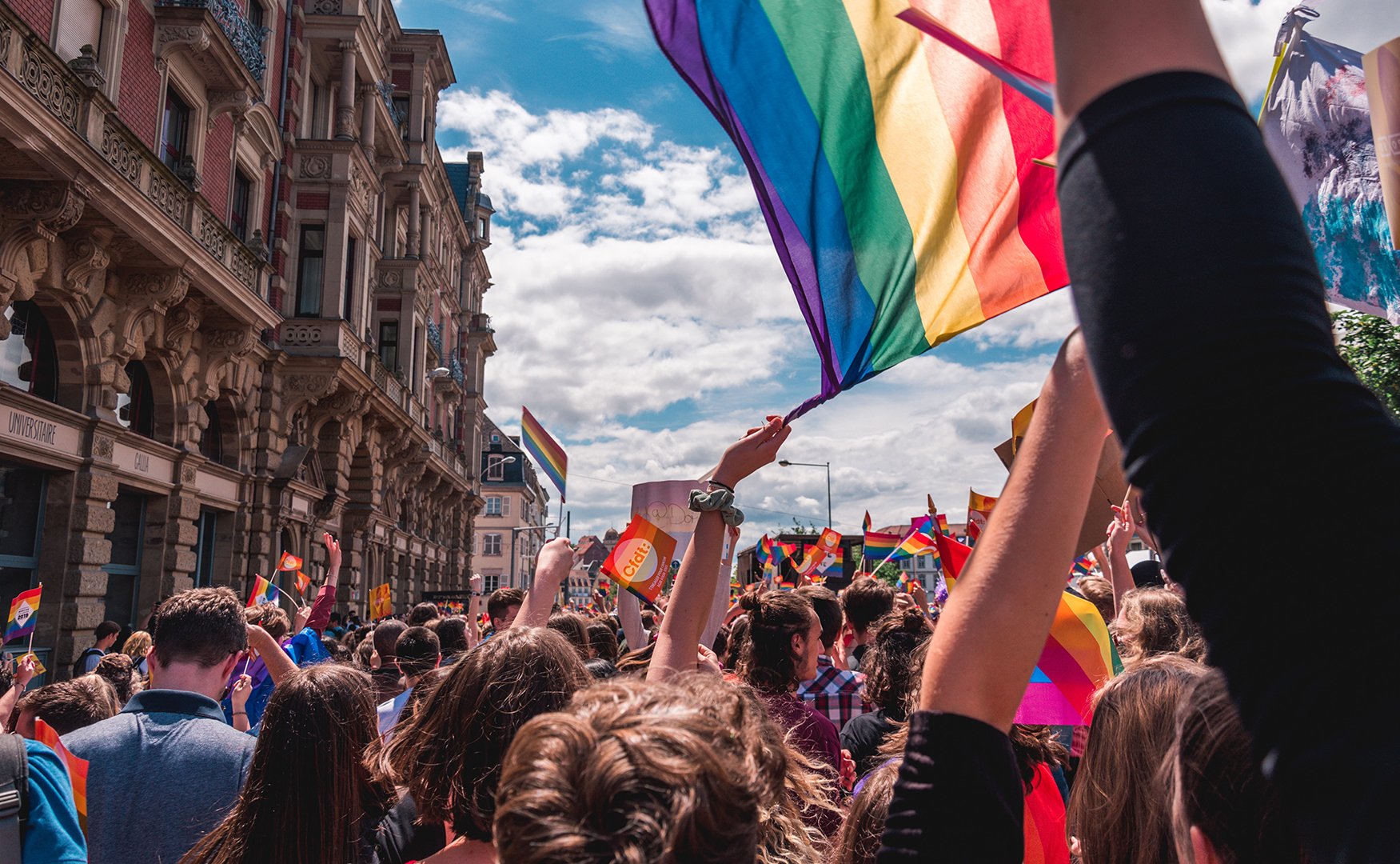
Some call it a riot – we call it an uprising. Whatever it was, we all know for certain how it began: with yet another police raid.
New York City has always been an epicenter of change, and back in 1969, people were starting to imagine the future as a radically different place than the present had been, especially for women, people of color, and the LGBTQ community. From the outside, it may look like the LGBTQ movement has done its job: queer icons are actively shaping pop culture, and the community has even worked its way into the world of mainstage politics, like Governor Kate Brown of Oregon. When you stroll through any Pride fest, rainbow flags burst from every float and stand, glitter rains from the sky, and rainbow capitalism pokes its head out from the stalls of bankers and health insurance companies who pretend to care about the LGBTQ community in hopes of making some dough.
In the big, happy party that is a modern Pride parade, it’s hard for some folks to imagine that it all began with a riot. But just fifty-one years ago, the Stonewall uprising poured onto the streets, awakening after years of oppression finally made the calm facade of the status quo crack.
This uprising, riot, and rebellion is solidified as the key moment of our LGBTQ history – but are we even retelling the story of our liberation right? Over the decades, the facts surrounding Stonewall have morphed and grown into a legend landing somewhere outside of the truth. When we look back at our history and marvel at the places we’ve come from, it’s important to keep the true story alive by getting it right. Untangling the Gordian Knot of our past starts with taking a closer look at the very place where our revolution began.
When we look back at the past, it’s usually with rose-tinted glasses. Personally, when I first visualized The Stonewall Inn, I pictured something romantic, a haven or oasis where queer folks could safely express ourselves, a place where we could be free, and where everyone just so happened to be dressed in bell-bottoms and listening to Jimi Hendrix.
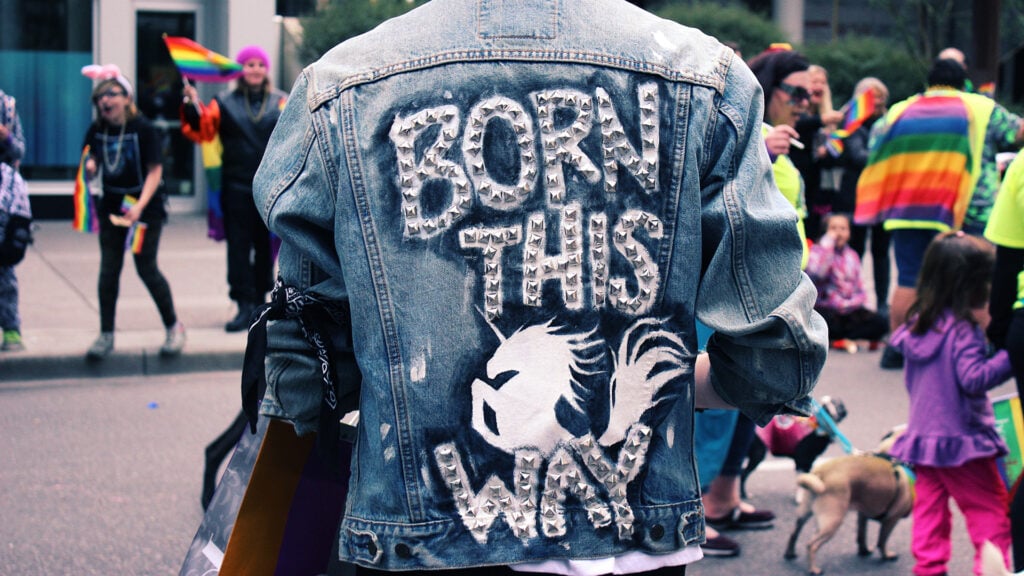
The real picture wasn’t so pretty. It was a place to meet other queer folks and to have community, but the very people who used to frequent the Inn will be the first to tell you that it was a “dump” and a “hellhole.” It was such a shoddy establishment that they didn’t even have running water – discarded drinks were just dumped out back, and that unwashed, newly emptied glass was used to serve the next customer.
Those germs were the least of their worries. The Stonewall Inn was run by the mafia, and if you slipped and gave over identifying information, you’d likely end up blackmailed by them. Money, in exchange for their silence about your haunts of choice. It wasn’t like anyone could call the cops on the mafia, either: the police were in on the whole scheme, and everyone knew it. Tony Lauria, the mafioso who owned Stonewall Inn, paid the NYPD the modern-day equivalent of over eight grand a month just to keep the bar open so the mob could turn out the pockets of queer folks night after night.
It’s important to know where we’ve come from. Most people reading this have probably gone to a queer bar with door security and multiple dance floors. Bathroom lines are long, but soap and running water are a given. Our cups are cleaned, the party’s always endless, and thousands of dollars were likely spent on good lighting alone in your favorite queer bar. When the club closes, we all stream out the doors and onto the streets, dialing Lyfts or walking home in packs. Yes, the memory of Pulse rests in all of our hearts every time we step into a club, but for the most part, we know nobody is going to extort us for being there. We can flash our ID to get a drink unafraid. We can swap digits. We can kiss outside on the way out.
None of this was the case in 1969 – and a fire was fixing to break out.
Back in 1969, the law was simple: if you were queer, you were criminal.
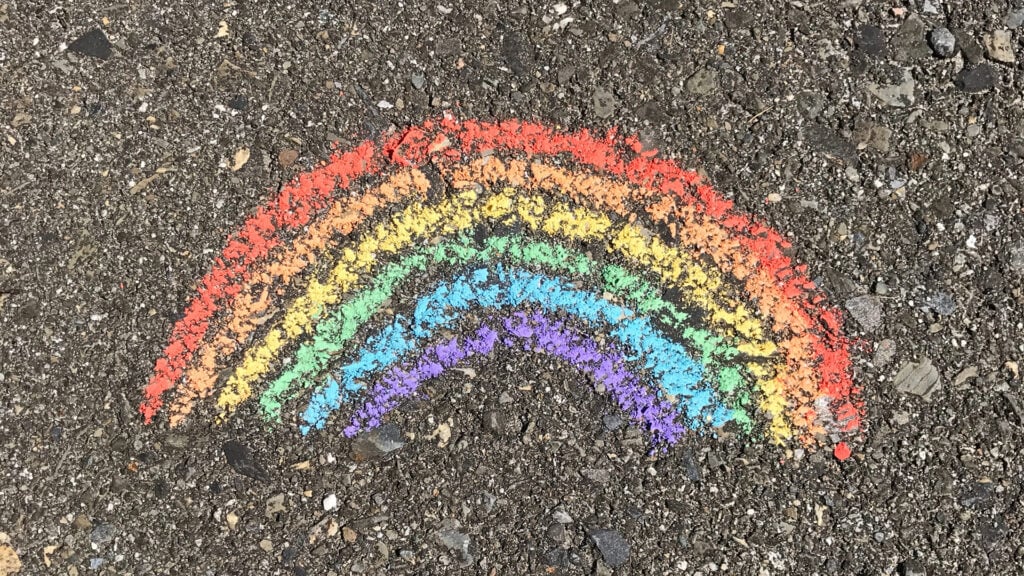
It was illegal in every single state except Illinois to be anything other than straight, and the queer community was so reviled that the police and FBI both had files with addresses and identifying information of anyone know to be under the LGBTQ+ umbrella. Regularly, both agencies used that information to raid and harass. At that same time, New York City had a ban on anyone wearing less than three “gender appropriate” articles of clothing at any given time. Anyone unlucky enough to be arrested for queerness had their information, including addresses, published in the local newspaper in an analog form of doxxing.
But the queer community still found ways to try and resist. As early as 1950, there were pro-queer organizations (back then called “homophile”) that sought to push equality and acceptance for LGBTQ people nationwide. The Mattachine Society was a gay men’s group founded in San Francisco with the aim of helping gay men assimilate into hetero culture. The Daughters of Bilitis was another prominent group at the time. While it started out as a secret organization for women to dance with other women safely, it evolved into a support group where women could talk with one another, and sadly, like Mattachine Society, eventually became a place to encourage queer women to assimilate into hetero society for their safety.
Still, even though the agenda was assimilation, they had some wins for progress, the most major victory being the U.S. Supreme Court ruling that the U.S. Post Office couldn’t refuse to distribute the Mattachine Society magazine. A small feat on paper, but one that legally secured LGBTQ media’s fundamental right to exist.
It makes sense that these organizations focused on assimilation. They emerged from the trainwreck of the Lavender Scare, a dark time in U.S. history when queer people were actively targeted by the government, as they thought queerness led to communism, and that anyone who was LGBTQ+ lacked “the emotional stability of normal persons.”
Out of fear of violence, job loss, and being shunned from society, the earliest protests were all buttoned-down. Their demands weren’t huge. All they asked was for society to accept their participation in institutions like federal employment or the military. Radical acceptance of their differences was too far fetched; they’d settle for participating in society. One particularly sad sign from a 1965 protest read “Homosexuals died for this country, too.”
But in 1969, people were starting to ask a bigger question: why did they have to fall in line with the rules of cisgender, white, straight men at all? And with this question, the stage was set.
This wasn’t the first time the police had raided the Stonewall Inn, and in the early morning of June 28th, 1969, the police thought it would be another shakedown. Seymour Pine, Deputy Inspector of the NYPD “Morals Division” at the time, said he had “no instructions except: put them out of business.” Queer icon Sylvia Rivera said this was the usual song and dance: police would padlock the door, and the mafia would cut the lock, diving in with “more money” and “more booze.”
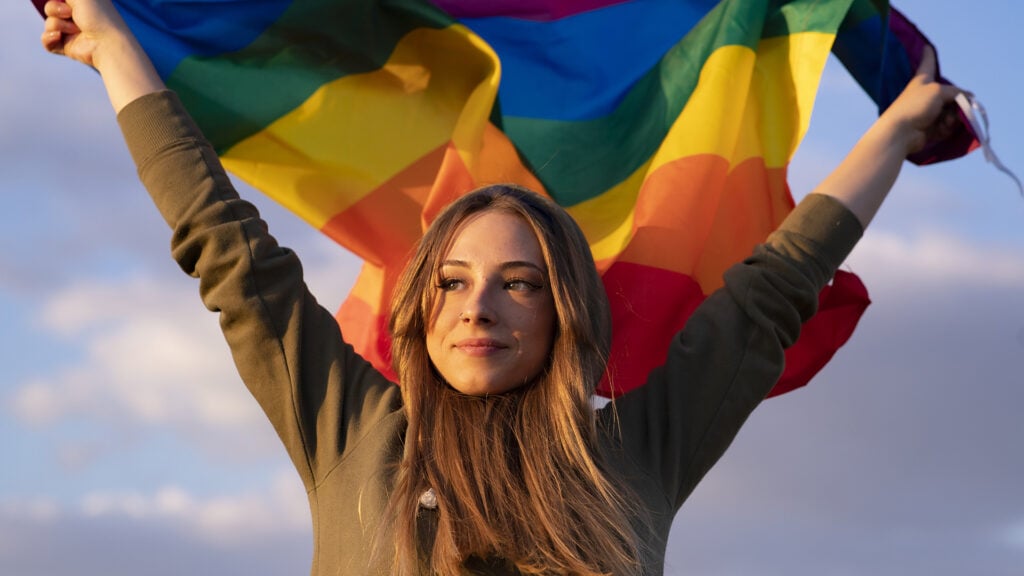
Activist Mark Segal was at Stonewall when the police raid began, and this is how he said it went down: first, cops targeted everyone who looked gender nonconforming, “banged” them against the walls, and harassed them. Then, they asked everyone else who looked like they might have cash to turn out their pockets and hand it over. “What’re we going to do, call the police?” Segal asked. “They are the police.”
These officers were sworn to only protect and serve the men who looked and behaved exactly like them, and out of a habit of hatred and anger, they plowed ahead, expecting things to unfold the same way they always had. But this time, the parents of the Gay Liberation movement had had enough.
Instead of lining up to exit with ID and be arrested like they’d been told to – they fought back. As they stood there waiting outside for their fate, they all found themselves staring one big question in the face: “Why do we have to keep on constantly putting up with this?”
Quickly, chaos descended, and instead of letting one handcuffed person get shoved into a cop car, a rain of pennies began pelleting the officers. Then, the pennies became nickels. Soon they were quarters. This barrage of coins had weight in the hearts of the community. Each coin lobbed at the police was a mockery, jeering the cops for coming down there to steal their money. Coins soon gave way to bulkier, more threatening items: rocks, bricks, glasses, Molotov cocktails, and according to some reports, even a parking meter.
Flabbergasted, afraid, and overwhelmed, the police retreated into the very building they’d come to raid. And with that, beautiful chaos reigned. Spanning six days and three nights, a total of twenty-one people were arrested, and the determination to never back down couldn’t be buried again. Yes, there was rioting, and pure, hot rage, but when you read interviews with people who were there, they all talk about the joy they all shared. Nobody would be forced to live in the dark any longer.
Like everything that defines the LGBTQ community, the uprising was a moment of resilience and resistance. Bold enough to be themselves, people started seizing the moment. While before they would have never dreamt of being so open in the streets, there was suddenly kissing, and laughter, and even kicklines where people danced and sang Rockettes-style. The most popular ditty was a bawdy tune that went a little something like this:
We are the Stonewall Girls.
We wear our hair in curls.
We don’t wear underwear
to show our pubic hair.
Irreverent and unafraid, the community knew that these officers had no power over them. It was, truly, a moment of pure pride. Some homophobic anecdotes try to cite the death of Judy Garland as the source of this anger, but we all know better. Pinning that grief and rage onto the death of a celebrity (no matter how treasured) only serves to belittle the very real courage our elders showed in the face of deep oppression.
Born of fire and pride, the movement had begun.
Here’s where our myth and legend of Stonewall truly gets tricky. Until recently, our versions of these events were whitewashed, and the movement was popularly attributed to cisgender gay men (just take a cringeworthy peep at the trailer for the 2015 movie Stonewall to get a drift of what I mean).
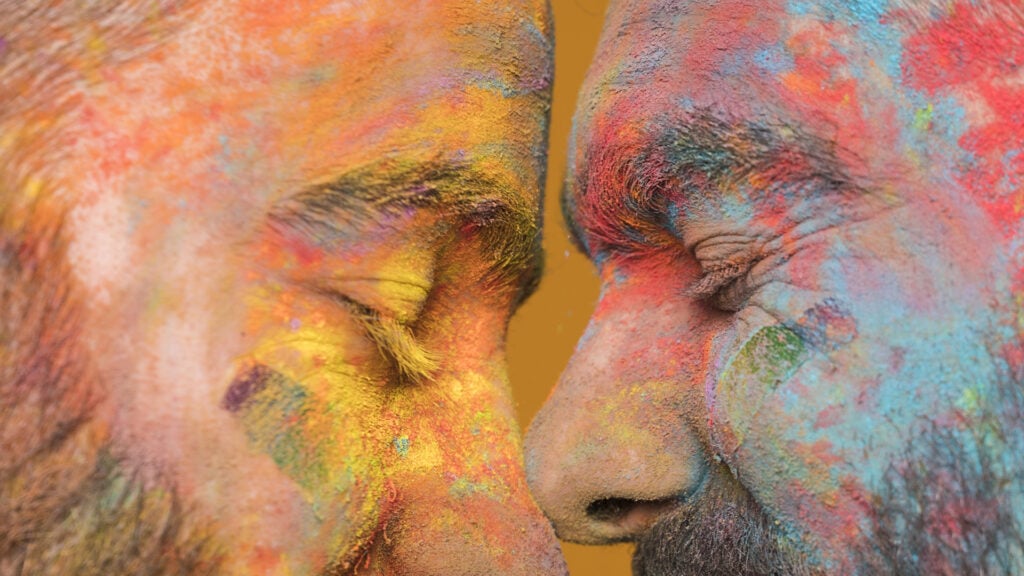
In the past few years, the dialogue has started shifting. Now when we talk about the uprising, there are a few key names that circle on all of our lips. But the line between fact and fiction gets blurry here, and there are three people in particular whose names seem to complete every Stonewall Uprising article. The question is, who were these three really, and what were their roles in the night that Stonewall collectively fought back?
The face of the movement and person who’s seen by many as our collective mother of Gay Liberation, Marsha “Pay it no Mind” Johnson is often credited with being the one who “threw the first brick” that turned the night into a rebellion.
But when you listen to an interview she did with LGBTQ historian Eric Marcus, she directly says that wasn’t the case. “I was uptown,” she said, “I didn’t get downtown [to Stonewall] ‘til about two o’clock...the place was already on fire and there was a raid already.”
By the time she got there, it’s very likely that many bricks had already been thrown – but that isn’t to say Johnson wasn’t vital to the riots. Once she was there, she was in it for change and wasn’t afraid to let the police know who was in charge. At one point, she scaled a streetlight and dropped a heavy bag onto a cop car, shattering its windshield.
As a vital voice for the Black and trans* community, Johnson was dedicated body and soul to the liberation of queer people everywhere. The fact that she didn’t throw the first technical brick is irrelevant, and if anything, does a disservice to the deeper impact she had as a revolutionary and activist. Unwilling to relent after the uprising quieted, Johnson went on to form the organization called STAR House, which helped unhoused trans youth get on their feet and find resources. She was a tireless advocate for her community – but of course, she wouldn’t have gotten as far as she did without one special person by her side...
Like her close friend Johnson, Sylvia Rivera is known for her first violent act of rebellion: throwing the first molotov cocktail. Her story is entwined with the story and mythos of this movement – and she was quick to downplay her claim to being the first as recently as 2001. “I have been given the credit of throwing the first molotov cocktail, but I always like to correct it,” she said. “I threw the second one – I didn’t throw the first.”
In a 1989 interview for Making Gay History, Rivera reflected deeply on her activism and her role in the uprising. She said she always had “revolutionary blood,” starting with the Black liberation movement before 1969, and evolving into work in line with her transgender community. As for the night of the uprising, she said it was “godsent” that she was there for the rebellion at all, since it was actually her first time ever at the Stonewall Inn.
While we don’t necessarily know who threw the first one (and her comment about being second was likely tongue-in-cheek) Rivera’s work and tireless advocacy for her community are what propelled her to a rightful place as one of our heroes. With Johnson, Rivera formed STAR House, and dedicated her life to making the world more beautiful for the trans youth who came after her.
The most forgotten name of the trio when we talk about the Stonewall Uprising, self-identified butch lesbian Stormé DeLarverie wasn’t there to back down. Interestingly, despite many people forgetting to mention their* name when talking about the uprising, DeLarverie’s experience is one of the only ones that was actually corroborated by several eyewitnesses. As the police started their arrests, DeLarverie decided they’d had enough – and fought back. Until that moment, most people had just been waiting and watching. But as DeLarverie fought back, they called out to the crowd, asking people why they were just standing by and letting it happen. Their words spurred the community to action.
Or did they? This is where it gets tricky. DeLarverie agreed that they were, in fact, the butch lesbian who fought the cops. Other times, they said that it wasn’t them and was another, unidentified person. Like everything else in word-of-mouth history, we’ll never know for sure, but one thing we do know is that DeLarverie’s story didn’t end with Stonewall.
Afterward, their dedication to the safety of lesbians across the city earned them the self-proclaimed nickname the “Guardian of the Lesbians.” Well into their eighties, DeLarverie continued to check in on lesbian bars to look out for “ugliness” rearing its head in the form of intolerance or hatred.
*(Many contemporaries debate DeLarverie’s pronouns, and different sources use she/her, he/him, or they/them. To err on the side of caution, I’ve opted for they/them; please reach out to me if you found any concrete interviews or evidence of one dominantly preferred pronoun.)
It wasn’t just these three who started the riots. There were countless others whose names were lost in the rubble of time. These unnamed voices were still pivotal to inciting change and building momentum, as well as their work on the ground to make life better for everyone who came after them.

Some stories point to the queer unhoused youth (very possibly the same folks who were later helped by Johnson and Rivera’s STAR House) as the real heroes of the riot. Tired of being oppressed, forgotten, and hated, young queers rose up and took a stand, throwing the first pennies to protest the police robbing them once more.
Just like with so much of our oral and secret history, we may never know the truth about who threw the punch, the penny, the brick, or the molotov cocktail – but we do know that every voice was a brave and vital pulse that spurred our movement on.
Sharing the truth about what happened at Stonewall isn’t meant to tear our idols down, or make us question our history. It’s vital that we know the complex backstory because we have to remember this: these people, the places they fought for, and the policies they railed against were all real.
When we pit our future and our push for equality against a mythic history, that first step towards greatness and change can feel daunting. But when we remember that the fire was created by folks just like us, who were tired of asking for change and ready to demand it, we remember that we’re capable of inciting that change ourselves.
And at the end of the day, queer writer Chrysanthemum Tran put it best in an interview with The New York Times when asked about why she wanted to correct ideas of Rivera and Johnson throwing the first bricks. “I want to remember them in a way that feels honest,” she said, “because their legacies extend far beyond that night.”
And in our collective history, Tran is right. It’s in our hands to see the depth of our legacy, and to honor the broad and vast stories of the people who came before us. We don’t need myths to propel us forward. Our history deserves its place in books taught in schools, and with that, we have a moral obligation to the truth.
When we look at the story of Stonewall, we see something more beautiful than a tidy myth: flesh and blood people, in all their messy glory, fighting back together. Those same activists, forgotten and glorified alike, paved the way for our future. And now’s our time to pave the way for those who come after us, and become the stories they’ll tell to the queer youth of tomorrow.